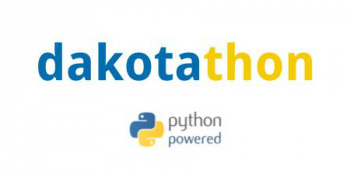Tools portal: Difference between revisions
Transclude Dakotathon page |
Don't transclude, even though it seems like a good idea. |
||
| Line 23: | Line 23: | ||
==WMT== | ==WMT== | ||
[[ File:WMT-3-views.png | 350px | right | link=https://csdms.colorado.edu/wmt ]] | |||
The CSDMS Web Modeling Tool, | |||
'''WMT''', | |||
is a web application that provides an Ajax client-side graphical interface | |||
and a RESTful server-side database and API | |||
that allows users, | |||
from a web browser on a desktop, laptop or tablet computer, | |||
to build and run standalone or coupled | |||
Earth surface dynamics models on a supercomputer. | |||
With WMT, users can: | |||
* | * Design a model from a set of CSDMS components | ||
* Edit model parameters | |||
* Save models to a web-accessible server | |||
* Share saved models with the community | |||
* Submit model runs to an HPC system | |||
* Download simulation results | |||
To see how you can use WMT to configure and run a standalone or a coupled model on the web, | |||
check out the [[WMT_tutorial|WMT tutorial]], | |||
or jump right into using WMT at https://csdms.colorado.edu/wmt. | |||
For more information on WMT, | |||
including links to its documentation and its source code repositories, | |||
please see the [[CSDMS_Web_Modeling_Tool|CSDMS Web Modeling Tool]] wiki page. | |||
==PyMT== | ==PyMT== | ||
Revision as of 12:45, 27 December 2016
Tools
CSDMS-IF (and maybe community?) has developed tools for the community to use. We should at least mention for each of our tools the following:
- why to use tools (how does a tool help them in their research),
- how to use the tools,
- where to get more information on the tools,
- how to report bugs, ....
- you name it.
I put your name down below each tool that needs more info. Maybe each tools needs its own page that links from this page, so the items below are really just a placeholder.
So type away, focus less on layout more on content right now maybe?
Thanks, A.
BMI
Eric
BMI builder
Eric
BMI tester
Eric
WMT

The CSDMS Web Modeling Tool, WMT, is a web application that provides an Ajax client-side graphical interface and a RESTful server-side database and API that allows users, from a web browser on a desktop, laptop or tablet computer, to build and run standalone or coupled Earth surface dynamics models on a supercomputer.
With WMT, users can:
- Design a model from a set of CSDMS components
- Edit model parameters
- Save models to a web-accessible server
- Share saved models with the community
- Submit model runs to an HPC system
- Download simulation results
To see how you can use WMT to configure and run a standalone or a coupled model on the web,
check out the WMT tutorial,
or jump right into using WMT at https://csdms.colorado.edu/wmt.
For more information on WMT, including links to its documentation and its source code repositories, please see the CSDMS Web Modeling Tool wiki page.
PyMT
Eric
Dakotathon

Dakota is a software toolkit developed at Sandia National Laboratories that provides an interface between models and a library of analysis methods, including support for sensitivity analysis, uncertainty quantification, optimization, and calibration techniques. Dakota is a powerful tool, but its learning curve is steep: the user not only must understand the structure and syntax of the Dakota input file, but also must develop intermediate code that allows Dakota to set up and run a model, read outputs from the model, and calculate a response statistic from the outputs.
The CSDMS Dakota Interface, or Dakotathon, is a Python package that wraps and extends Dakota’s file-based user interface. It simplifies the process of configuring and running a Dakota experiment, and it allows a Dakota experiment to be scripted. Dakotathon creates the Dakota input file and provides a generic analysis driver. Any model componentized in the CSDMS modeling framework automatically works with Dakotathon. Dakotathon has a plugin architecture, so models not wrapped into the CSDMS modeling framework can be accessed by Dakotathon by programmatically extending a template; an example is provided in the Dakotathon distribution.
